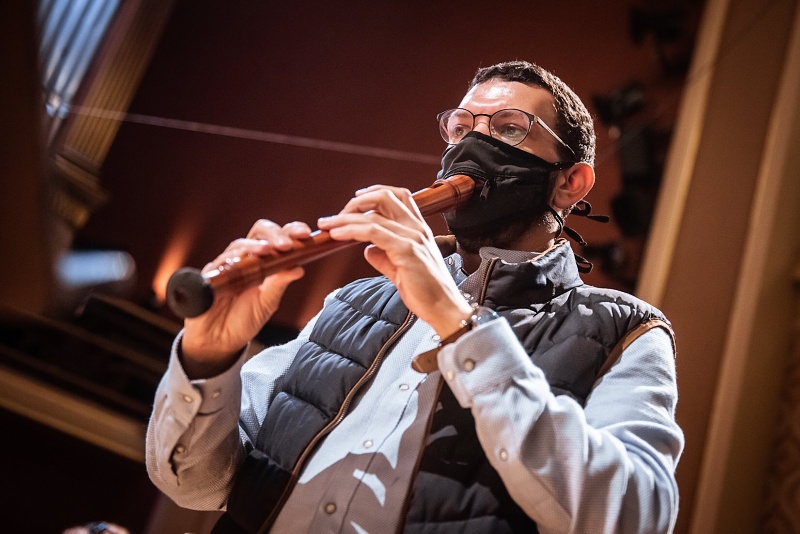Recently, the zippered facemask, which supposedly protect wind players and their surroundings from infection by the coronavirus, has generated considerable attention. Do these face masks work, however? Flautists Jakub Kydlíček and Julie Braná, professors at the Prague Conservatory of Music, try to find out.
We consider it necessary to share our experiences with zippered face masks in the context of recorder playing. We are motivated to do so by the ever-growing number of reaction to the benefit concert given by the Czech Philharmonic on April 25th, 2020, which included performances by wind players (namely recorder and French horn players.)
Given the security measures at the time, the concert took place under strict hygienic precautions, the most visible of which were a) unusually large spaces between performers b) all performers wore masks (during the concert and rehearsals and at all times while in the building). The concert was broadcast live and is publicly accessible. Immediately after the broadcast, a debate erupted within broader artistic and pedagogical circles concerning the necessity, functionality, and aesthetic quality of these “protective” masks.

A key question emerged and that was the actual functionality of these face masks and their possible use in both performance and pedagogy – especially in conjunction with the planned renewal of in-person lessons at elementary music schools during this school year.
The functionality of the zippered face masks while playing the recorder is questionable at the very least. The aerosol spreads primarily through the dispersal of the condensed breath particles (not to be confused with “spit”) through the labium and sometimes the finger holes. This means that we cannot expect the mask to protect the instructor from infection by a student wearing the mask (and vice versa).
The use of a zippered face mask while playing a wind instrument is uncomfortable given, among other things, the strong and heavy material it is made of. Here we should draw a distinction between long-term use while teaching and short-term use during rehearsals and performances. In other words, there is a difference between wearing the mask for a 20 minute performance and a full day of teaching.
It is necessary to pronounce the idea that you could teach wind instrument playing for many hours in such a face masks as unrealistic. The zippered face mask thus fulfills more of a formal, or aesthetic, function and does not meet our expectations for long-term practical use (i.e. full-time teaching). We do not consider the zippered face mask a good protective measure for in-person instruction.





Is this serious? How stupid can be the human race… it’s really sad…
Shame on them! Very bad example of coercion.
Wow! Stupidity doesn’t have limits… Wake up, guys! We don’t need to live like this!